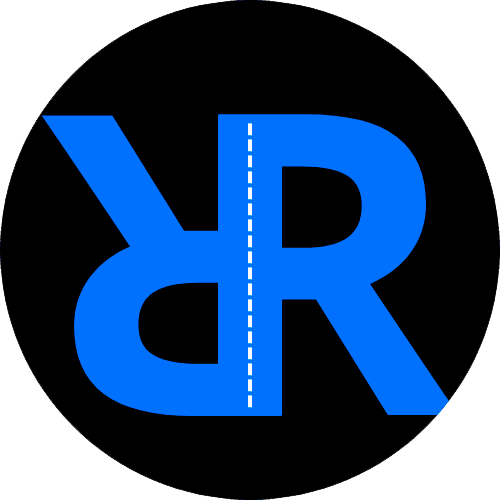SAP Transaction RSRT1: A Comprehensive Guide for SAP Users
Welcome to our tutorial on SAP transaction RSRT1, a powerful transaction code used in SAP to execute the BEx Analyzer. In this tutorial, we will provide you with a step-by-step guide on how to effectively utilize RSRT1 for reporting and analysis in your SAP system. Whether you are a beginner SAP user or an experienced consultant looking to expand your knowledge, this tutorial will equip you with the necessary skills to navigate through RSRT1 seamlessly.
Before we dive into the details, we would like to introduce you to a valuable resource that can enhance your SAP skills and help you become an expert in SAP MM. Check out the SAP MM online video training offered by our expert SAP MM consultant, available at roadtoexpert.com. This comprehensive training program will provide you with in-depth knowledge and practical insights to boost your proficiency in SAP MM and accelerate your career growth.
Now, let’s begin our tutorial on using SAP transaction RSRT1.
What is SAP Transaction RSRT1?
SAP Transaction RSRT1 (BEx Analyzer) is a transaction code used to execute the BEx Analyzer, a tool for reporting and analysis in SAP Business Warehouse (BW). It allows users to create, modify, and execute queries to retrieve data from the BW system and generate meaningful reports. With RSRT1, you can analyze data, create charts, and export reports to various formats for further analysis or distribution.
Step 1: Accessing SAP Transaction RSRT1
To start using RSRT1, follow these steps:
- Log in to your SAP system using your user ID and password.
- Launch the SAP Easy Access Menu.
- Navigate to the “Business Explorer” folder and expand it.
- Locate and click on the “BEx Analyzer” folder.
- From the sub-menu, select “BEx Analyzer” to proceed to the RSRT1 transaction.
Step 2: Understanding RSRT1 Transaction Screen
Once you have accessed RSRT1, you will encounter the BEx Analyzer screen, which consists of various elements and functionalities. Let’s explore each of them:
- Toolbar: The toolbar contains various icons and buttons for performing actions such as executing queries, formatting reports, and exporting data.
- Query Area: This is the main area where you build, modify, and execute queries. You can drag and drop characteristics, key figures, and variables to define the structure of your query.
- Filter Area: The filter area allows you to apply filters to restrict the data displayed in your query. You can add filters based on characteristics or variables to refine the results.
- Result Area: The result area shows the data retrieved from the BW system based on your query and filters. You can perform calculations, apply formatting, and create charts to analyze the data.
- Variable Screen: The variable screen allows you to enter values or select variables to dynamically update your query results. This enables you to create flexible and dynamic reports.
- Menu Bar: The menu bar provides access to various functions and options for customizing your query, formatting reports, and managing queries and workbooks.
Step 3: Creating and Executing Queries with RSRT1
To create and execute a query using RSRT1, follow these steps:
- Start by defining the structure of your query in the query area. Drag and drop characteristics, key figures, and variables from the available options to the rows, columns, and filters.
- Apply filters in the filter area to restrict the data displayed in your query. You can add filters based on specific values, ranges, or variables.
- Enter values or select variables in the variable screen to dynamically update your query results.
- Click on the execute button in the toolbar to run the query and retrieve data from the BW system.
- Analyze and format the query results in the result area. You can perform calculations, apply formatting, create charts, and export the data to various formats.
- Save your query for future use or share it with other users.
Congratulations! You have successfully created and executed a query using SAP transaction RSRT1.
Step 4: Exploring Additional Functionality
SAP transaction RSRT1 offers various additional functionalities to enhance your reporting and analysis capabilities. Here are some notable features you can leverage:
- Report Formatting: Use the formatting options in the toolbar to customize the appearance of your reports. You can change the font, color, style, and alignment of the data, as well as add headers, footers, and logos.
- Chart Creation: RSRT1 allows you to create charts to visualize your data. You can choose from various chart types, such as bar charts, line charts, and pie charts, and customize the chart properties to suit your needs.
- Data Export: Export your query results to various formats, including Excel, PDF, and HTML. This enables you to share reports with others or import the data into other applications for further analysis.
- Report Distribution: Use the distribution options in the toolbar to send reports to specific recipients via email. You can schedule reports to be sent automatically at predefined intervals, ensuring timely delivery of information.
Conclusion
In this tutorial, we have provided you with a comprehensive guide on using SAP transaction RSRT1 in the SAP BW system. We covered the basics of RSRT1, explained how to create and execute queries, and explored additional functionalities. Remember, continuous learning and practice are key to becoming proficient in SAP.
To further enhance your SAP skills, we highly recommend our SAP MM online video training, designed by our expert SAP MM consultant. This training program offers comprehensive modules and hands-on exercises to help you become an SAP MM expert. Visit roadtoexpert.com to learn more and take your SAP MM skills to new heights.
